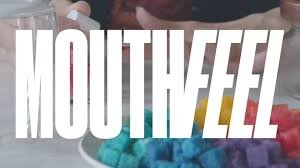Food and Contrasts in Lima, Peru
If you have been paying attention to the goings-on of the gastronomic world, you’ve probablyheard something about Peru: about how the world’s top chefs are enamored with the cuisine, about how Peruvian restaurants are opening around the globe like bottles of poppers at an orgy, and how its capital city of Lima is considered by many to be the culinary epicenter of Latin America. The city that was once known – even to Peruvians – as “Lima the Ugly” and used by tourists as little more than a stepping stone to Machu Picchu is now becoming a destination in itself, especially for those who are devoted to their palates.
Visitors to the Andean nation’s capital city will more than likely settle in the tony seaside neighborhood of Miraflores where the majority of Lima’s tourist accommodations, as well as its finest restaurants, are situated. While the “Thrice Crowned City of Kings” has been making strides in cleaning itself up to become more accessible and less intimidating, Miraflores is still one of the few places where visitors can feel safe walking around at night. This might make it seem as if the neighborhood is a sterilized, bland compound for prissy tourists to feel safe, but Miraflores offers a lot of local color along with unpretentious eats mingling with the backpackers and pitucos, the local upper crust snobs.
The heartbeat of Miraflores is inarguably found at the Parque Kennedy, a triangular patch of green surrounded by restaurants, cafés, bars, a department store, and the requisite church. It is a great introduction to Lima’s schedule where it is normal to have dinner with your family at 10:00 PM on a weeknight. The park also presents a vibrant tableau of Lima: sacred and profane, wholesome and perverse, rich and poor all amongst a backdrop of food and drink.
Young couples kiss and fondle each other on benches facing a playground of screeching children, their parents chasing after them – the before and after, if you will. A less fortunate child in rags begs for money from people waiting in line for a sánguche (sandwich) before receiving a stern “camina, mocoso” (keep walking, brat) from a police officer.
Steps away from the displays of heterosexuality, an effeminate boy on a study abroad trip chats with his fag hags about nothing in particular while cautiously checking out the loitering male prostitutes through the corner of his eye. Abuelas and other faithful file out of the baroque church that anchors the western end of the park while a pusher unabashedly whispers “mareewana, cocaeen” to passing gringos in the hopes of profiting from someone’s high.
Food options abound around the park. There is the popular Haiti (pronounced “high tea”), known to locals and tourists for its WASP country club specialties, fruity cocktails, and people watching. The D’Onofrio parlor serves every Peruvian’s favorite brand of ice cream in the form of spaghetti or princesses or animals. There are eateries specializing in rotisserie chicken, pizza, hen broth with noodles, and Peruvian standards served with pisco cocktails.
To truly enjoy the park like a local, however, a visitor must eat a sánguche. The bustling La Lucha serves a variety of these Peruvian sandwiches filled with roast turkey, pot roasted beef, or local country ham on pan francés, a roll whose shape is said to be a model for the perfect ass: rounded, firm, and with a crease down its center. La Lucha is also known for its fries made with huayro potatoes that feature ribbons of purple running through them. You can also get a shot of pisco there, perhaps to spike one of the sanguchería’s Amazonian fruit smoothies.
La Lucha does a fine job, but the carts that dot the park are where the real taste of Parque Kennedy is. The same sandwich from La Lucha will cost you half as much, and you get to experience Peruvian street food culture firsthand – the shouts, the banter, the begging mocosos. Your sweet tooth can be satisfied at the next cart over with a cup of politically incorrect (to Americans, at least) “zambo rice,” a rice pudding enriched with dark brown sugar and topped with chopped nuts and shredded coconut.
Walking back to your hotel, you may stop at the Ripley department store to use the restroom only to see that all the urinals are occupied by men who look like they have just been interrupted from something illicit…you may linger a while, yourself. When you decide to call it night, the 24 hour Metro grocery beckons and you walk out with a couple of bottles of water – all named after Catholic saints – and a pack of Hamiltons. The barely legal hustler sees you and asks how you are doing? After the sights, sounds and flavors you respond that you’re doing well and ask how he’s doing? He replies, “waiting for you, my love!”
Story and mouthshots by the loveable Carlos C. Olaechea. Follow him on Twitter for his latest eats and more.


